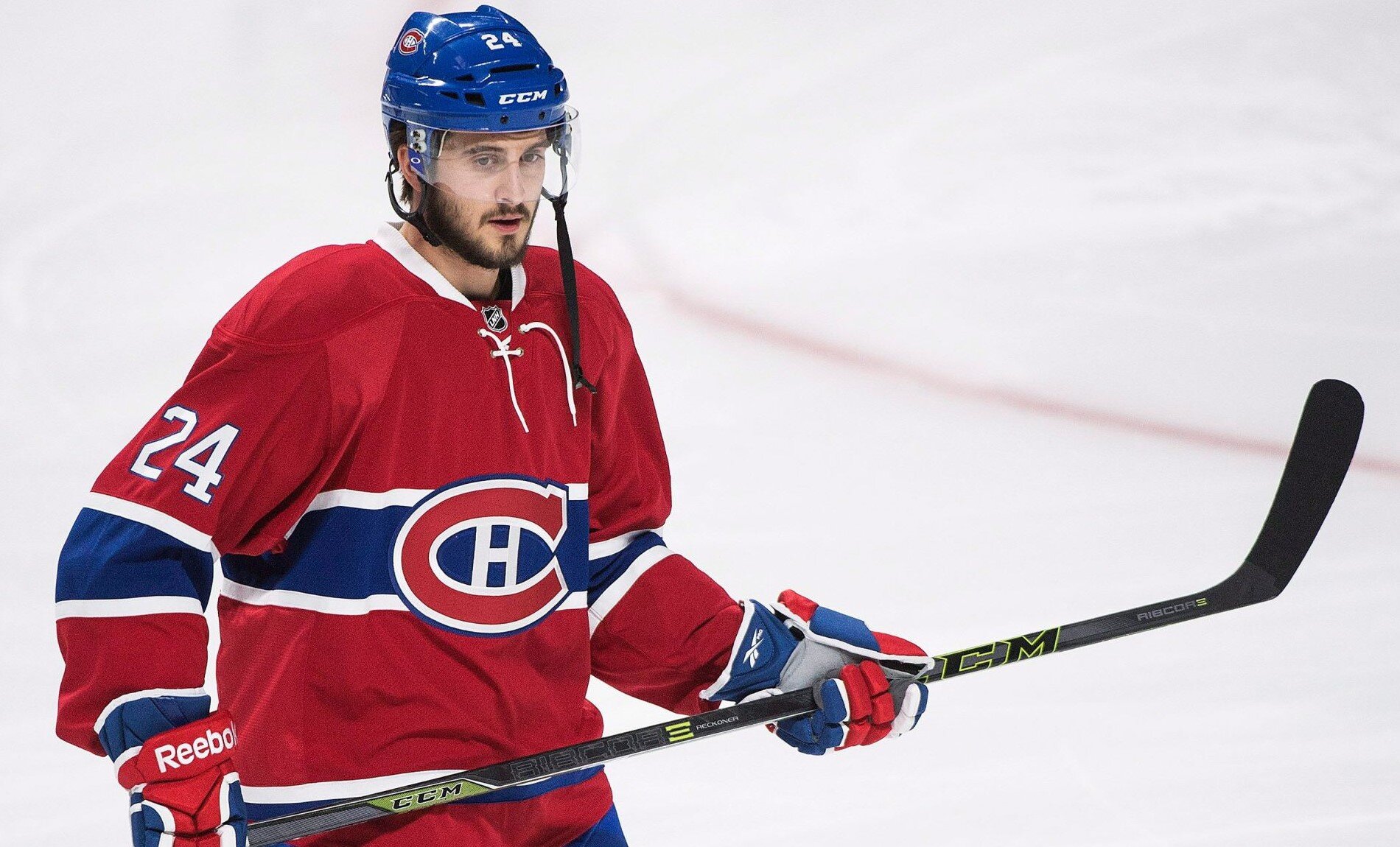August 2, 2021 | 11:30am ET
BY Dennis Bernstein, The Fourth Period
LA SUMMER: THE EYE OF THE BEHOLDER
“Beauty is in the eye of the beholder” — Margaret Wolfe Hungerford, 1878
“Everyone has a plan until they get punched in the mouth” — Iron Mike Tyson, 1996
LOS ANGELES, CA — As the calendar turns to August, the hockey world exhales to regroup for what is hoped to be a normal 82-game NHL regular-season in these anything but normal times. The world is still trying to shake free with from web of coronavirus that has injected a level of uncertainty we’ve not seen in our lifetimes. But the uncertainty is now paired with milestones that gives us hope that we can experience full NHL arenas come the Fall.
Those signs were the completion of the truncated NHL 2020-21 season where the adoring fans of the Tampa Bay Lightning got to witness Lord Stanley’s Cup awarded in their home arena, an experience they missed out on when the Lightning won the front end of their back-to-back championships inside the safety of the Edmonton bubble last September.
More recently, the NHL vaults that were slightly opened for business last Fall were flung wide open last week –per our friends at Cap Friendly, over $975 million in contracts were handed out in the first four days of Free Agent Frenzy.
Pandemic, what? Flat cap, who?
Among the teams that dropped significant coin were the Los Angeles Kings. In one of the most debated free agent signings last week (especially in Montreal, hello Habs Twitter), Phillip Danault agreed to a $33 million, six-year deal at the opening bell of the Frenzy. Back in the day, Danault was a first-round pick by the Chicago Blackhawks (26th overall – 2011) but made his bones in his home province of Quebec via a trade that in retrospect was a huge win for Canadiens GM Marc Bergevin. Phillip was obtained in a 2016 trade along with a draft pick that eventually became promising defenseman Alexander Romanov in exchange for Tomas Fleischmann and Dale Weise.
Given the opportunity to prove himself not far from his birthplace in Victoriaville, Danault established himself as a reliable NHL center. In each of his five full seasons with Montreal, he won over 50 percent of his faceoffs and his last three seasons, he was in the top seven in voting for the Selke Trophy, awarded to the league’s best defensive forward and could be the second King to win the award at some point during his six-season commitment. Last September, Danault turned down a $30 million, six-year extension from the Canadiens in the hopes in cashing in for more with a big season in the final year of his three-year, $9.25M deal.
Phillip ultimately landed north of the Habs offer he declined but probably not in the manner he thought it would play out. Though his always strong two-way play didn’t waver, his goal total dropped to its lowest (5) since his trade season. Though he was a key member of the Cinderella team that eventually lost in five games in the Cup Final to the Lightning, Montreal chose to move on and did not offer him an extension, trusting the pivot to a trio of youngsters, Nick Suzuki, Jesperi Kotkaniemi and Jake Evans.
And that’s where the discussion starts about Danault. Is he truly a No.2 NHL center given the fact that he’s never scored more than 13 goals in any regular-season? Is he worth the money having only registered more than 50 points once in his career?
When it comes to comparables, it’s about optics. Yes, Phillip Danault would be a 3C in Edmonton and Toronto. But looking past those teams and throwing out last season’s underperformance does his production in the 2018-19 and 2019-20 (53 in 81 games and 47 points in 71 games) align with the production of most second line centers? You can argue it does and those numbers were manufactured essentially at even strength.
Part of the negotiation between Los Angeles and his camp included the opportunity for Danault to be installed as its 2C and when you sign a pivot for that AAV and term, it’s clear he’s not arriving as a bottom-six player. In that role, you can assume he will get a full run on LA’s second powerplay unit, which could help boost his goal totals.
The critics are correct and fair, it’s unlikely Danault will ever be a 25G man, but management didn’t enter the conversation with that expectation. What this player potentially provides is multiple solutions – first and foremost, in the short-term, his presence will pare down the minutes Anze Kopitar will log next season. Anze will turn 34 in October and while he will never refuse minutes, the 21:11 (sixth highest in the league last season) isn’t sustainable if the Kings have designs to make the post-season for the first time in four seasons.
In the longer view, the signing takes the heat off rushing Quinton Byfield and figuring out if Gabriel Vilardi is a center or a winger (a hint from Rob Blake just ahead). If Byfield continues to ascend in his development, at some point he will be patrolling the middle behind Kopitar and Danault this season, leaving two options for Vilardi, either 4C or somewhere on the RW depth chart.
For a team publicly preaching patience, the Danault signing shows that maybe there isn’t as much patience at the corner of 11th and Figueroa as some might think. The consensus was the two top-six forwards they would add this summer would be on the wing (Brandon Saad, Vladimir Tarasenko and Tyler Bertuzzi were among the names rumored), not a $5.5M AAV pivot.
If I were to bet, I’d be comfortable wagering a few dollars that we’re not going to see Danault or Byfield on left wing this season. And that’s perfectly fine, watching Vilardi last season, the gifts he possesses aren’t suited for a top-six center; a two-way game never surfaced that is required for a 1C/2C but his shot, the ability to navigate in tight spaces and size sets him up to be a dangerous goal-scorer like another former King, Tyler Toffoli. I drew this comparable when he was drafted and I’m sticking by it. Despite my criticism of the player, I believe he still has the capacity to be a core player in Los Angeles if he doesn’t wind up in a trade package. After a disappointing 2020-21, it’s time to play to Vilardi’s strengths and not try to fix the weaknesses in his game (all on the other side of the puck) and it may result in the team’s first 30-goal scorer since Toffoli.
I asked Kings GM Rob Blake about the ramifications of the deal for Byfield and Vilardi during last week’s media availability and his answer crystalized the direction for me. While not naming specific players, connecting the dots doesn’t require complex thinking.
“Any of the teams I’ve been involved with I’ve seen centerman go the wings, I’ve rarely seen a winger go to center,” Blake said. “I don’t see any reason why any of these centers can’t go to the wing and find the right position.”
EMPTYING ONE BARREL
At the start of the offseason, Los Angeles had the opportunity to make any trade or free agent signing they chose. They had plenty of cap space and as we’re constantly reminded, among the best if not the best prospect pool in the NHL. While the Danault move grabbed the most attention, two established players were added to the mix for the coming season. Viktor Arvidsson, who was destined for the Seattle Kraken before Rob Blake scooped him up for two draft picks from Nashville in the hopes of a bounce back season after two down years, and Alexander Edler, the lifelong Vancouver Canuck who better fills the depth role on the left side than the departed Kurtis MacDermid.
With the additions of the three veterans and the extensions given to Alex Iafallo, Matt Roy and Andreas Athanasiou (a stunning raise of $1.5 million to $2.7 million given his teammate Trevor Moore was paid almost $1M less for the same production last season), it places the franchise at a different level to start next season.
The good news? The Kings are now a cap team, elevating to approximately $2.7 million of the cap according to our friends at Cap Friendly. That number could hop to around $5 million if certain players are sent down to the AHL.
The not-so-good news? The Kings emptied one barrel of their asset shotgun by eating up $19 million in cap space but incrementally added just 15 regular-season goals (Arvidsson 10, Danault 5, Edler 0) to a team that was ranked 27th in offense last season.
Not exactly a Jack Eichel trade. And the L.A. marketing efforts weren’t assisted when the Dodgers traded for Max Scherzer and Trea Turner and the Lakers traded for Russell Westbrook in the same week. (You forget, I’m the guy that wanted to make a big splash to help sell tickets).
The pendulum does swing back at the end of next season given expiring contracts on Olli Maatta, Brown, Athanasiou and Edler along with the expiration of the retained salary on the Jeff Carter deal. Some of the space will be eaten up with Adrian Kempe being an arbitration eligible RFA, Mikey Anderson and Vilardi coming off entry-level contracts and Cal Petersen in the walk year of his two-year deal.
The bottom line for this season though, is if Los Angeles is in the mix for a playoff spot and needs to add a player of consequence for a stretch run there could be some cap gymnastics to do at trade deadline time.
One final note on the future state of the roster, at some point last season a rumor surfaced that Los Angeles was in pursuit of a young dynamic left shot defenseman in their mid-20s to play alongside Drew Doughty. If you’ve noticed, the big bucks paid out to blueliners (Dougie Hamilton, Seth Jones, Miro Heiskanen and Zach Werenski), it’s going to be a pricey proposition, but reality is that the issue won’t be the spend but rather the availability of the most elusive asset for the franchise, a legitimate left side partner for Drew. You can roam the other 31 NHL rosters and you won’t find that player who is available (Jakob Chychrun and Rasmus Dahlin appear to be untouchable), so the chase may not end next summer which would provide an obstacle in achieving legitimate contender status.
TO PLAYOFFS OR NOT TO PLAYOFFS?
For Los Angeles, the punch in the mouth Tyson refers to is missing the postseason three consecutive times in a league where half the teams make the postseason, a fourth consecutive miss will cast further doubt on if the original plan back to contention was constructed correctly.
Does Todd McLellan have an improved roster since the end of last season? Adding three experienced players makes that answer an easy yes, on paper it is a better team provided there is no significant regression by Kopitar and Doughty and with Dustin Brown giving one more season of goal production. At some point, the heralded prospect pool must produce a breakout offensive season (Anderson and Toby Bjornfot has given them solid but minimal offensive production) and if it happens this season, it greatly increases the chances for postseason hockey at Staples Center.
What may be the greatest factor in favor of making the postseason is the state of the Pacific Division. On paper, it appears to be the worst in the NHL. Vegas looks like a clear-cut division winner despite questions about chemistry and recently announced shoulder surgery for key contributor Alex Tuch. Edmonton appears to be sturdier on the blueline and Zach Hyman is a nice add, but can you trust Mike Smith to fashion another season like the last one at age 39?
After the Golden Knights and Oilers, it’s a total crapshoot. Does Vancouver bounce back by adding OEL and Conor Garland? Calgary lost a major locker room presence in Mark Giordano, the other California teams didn’t improve, and I refuse to believe the Seattle Kraken are the VGK, Part Deux.
So, that leaves the three seed wide open for Los Angeles to seize. The question is, have they done enough to make up the 14 points (albeit in a differently aligned league and division) they missed the postseason by in the 2020-21 season? Blake told me there is no mandate from ownership to make the playoffs, there is a mandate from him to get to Game 83, “It’s been a while…”
I will leave it for you to consider where they stand as beauty is in the eye of the beholder.
See you in September.
Dennis Bernstein is the Senior Writer for The Fourth Period.
Follow him on Twitter.
Past Columns:
May 18, 2021 - Kings Last Call: How far is close?
Apr. 15, 2021 - LAK at 42: The Aftermath



